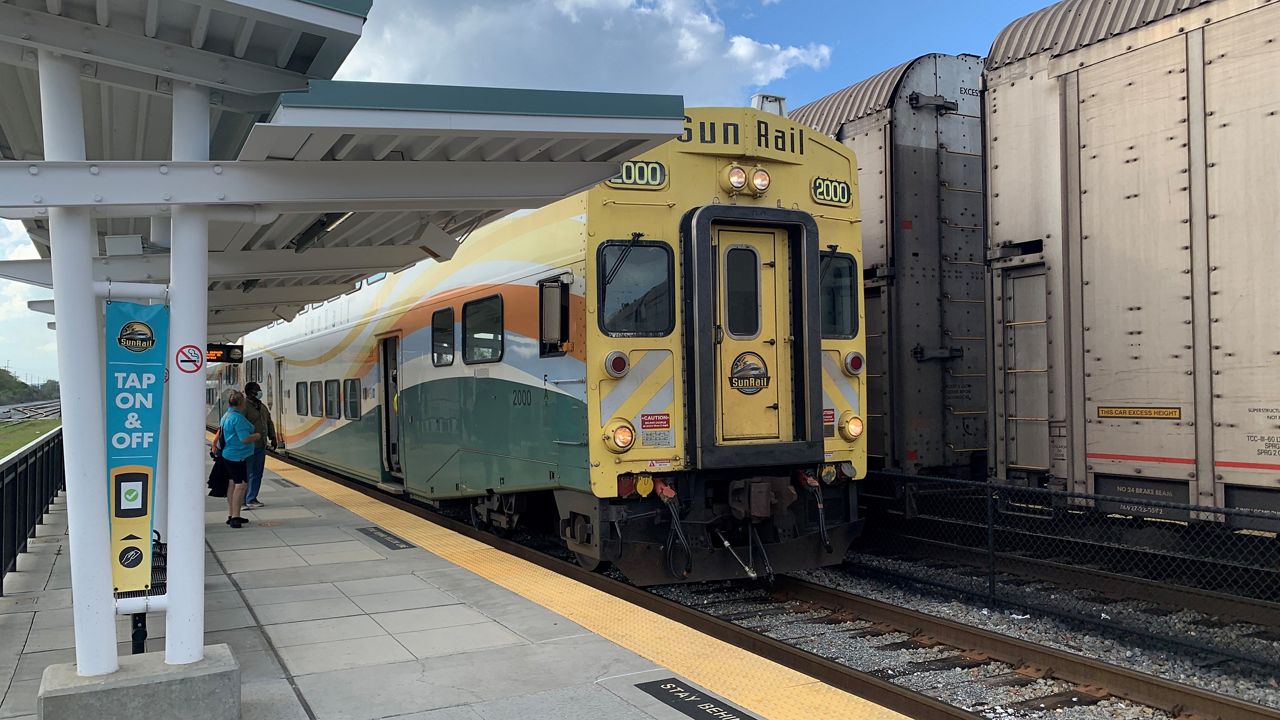SEMINOLE COUNTY, Fla. – As gas prices continue to climb each day, commuters are turning to some cost-friendly ways to get to work.
SunRail, for instance, saw a 23% increase in February ridership when compared to January of this year.
The first quarter of the year is still not over but according to SunRail, they are up 40% from this exact time in 2021.
Sitting on a bench at the SunRail station in Sanford, Lachandra Valle would rather sit and wait for a train than sit and wait in I-4 traffic to get home in Downtown Orlando.
She says the train is not just more convenient because of everyday traffic, but the gas prices aren’t helping her wallet either.
According to AAA, the average gas price in both Orange and Seminole County Tuesday was $4.15 a gallon.
“I have a Tahoe,” Valle says. “So you can only imagine what it takes to fill that up, so now I am looking close to $90 for a fill up now vs. $50 before.”
The average size gas tank in a car is about 12 gallons — for an SUV or truck it, can be anywhere from 15 to north of 20, which means consumers are paying more than usual at the pump right now.
But, if you rode SunRail for two counties for an adult, you could be paying about $90 for the month. That is significantly less than filling your tank each week.
David Holt is the president of Consumer Energy Alliance, the leading consumer advocate in support of affordable energy for families and businesses across the country. He says what Americans are now paying at the pump will only have a domino effect on nearly everything else.
“You can’t make plastics without oil. You can’t make steel without natural gas,” Holt explains. “It is not just going into the transportation sector, it is going in to manufacturing, it is going in to commodities.”
Spring break is right around the corner, and from March 14th to the 18th SunRail will offer a later evening southbound train, encouraging the community from Osceola to Volusia to try the train during both day and night to experience all parts of Central Florida.
As for school systems, they, too, are seeing an impact of rising gas prices.
According to Orange County Public Schools, they have around 630 buses operating on any day.
On average, each bus uses about 95 gallons of diesel per week, and OCPS has seen about a 9% increase in fuel costs from January to February. Part of the costs for gas are being made up because of the driver shortage.
In Seminole County, the district uses 300 buses per day, and it's a 50-50 split between diesel and propane-run buses.
Diesel, according to Seminole County Public Schools, went from $2.91 a gallon to $3.38 from January to the end of February, which was a 16% increase.
Propane went up from $1.58 a gallon to $1.77, a big reason SCPS is not feeling as big a hit as other districts across the state.
“We put in a contingency plan early on around 2015. We started switching from all diesel to propane buses,” Stan McKinzie, the assistant director of Transportation for SCPS, said. “Once we switched from propane buses, it allowed us to plan ahead. With propane, we have a steady supply of fuel also at a cheaper rate.”
According to McKinzie, a diesel bus gets about six miles per gallon. A propane bus gets about four.








